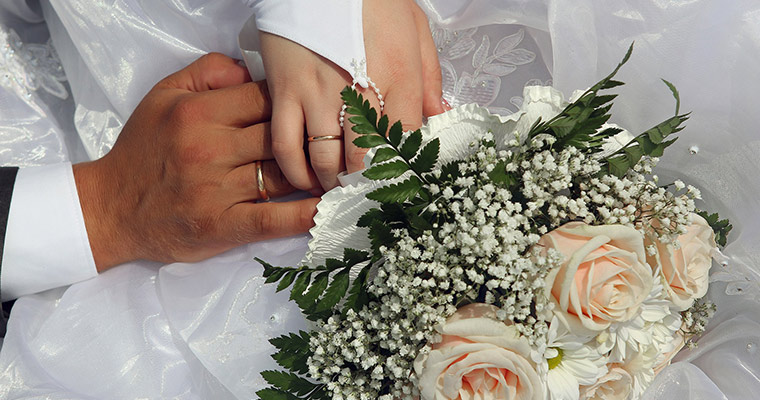1. Japan
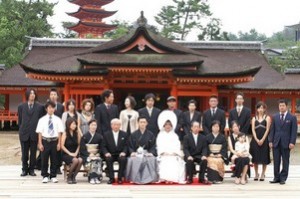
Generally wedding elebration in Japan held in the Spring and Autumn, the season is considered a good day to married. Japanese still believe in the Japanese calendar which explains where the good days and bad days. There are two ways Japanese wedding celebration, that is by the traditional Shinto ceremony and modern Western-style wedding
2. Kenya
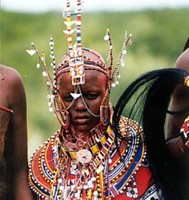
Wedding traditions in Kenya differ from one ethnic group to another and this is because all these groups have their own customs regarding marriage. However, apprerently most of the weddings taking place in Kenya at the moment are more westernized as people are moving away from the traditional way of doing things.
It is a common Kenya Wedding Tradition for the bridegroom to pay the bride price before the wedding ceremony although this is not strictly the case at the moment. The wedding ceremony can still take place in some communities and the bride price can be paid later. The bride price can be in form of cattle or goats but nowadays most people pay in money form. The paying of the bride price is always like a small ceremony of its own as the groom and his friends and probably his father and brothers go to the home of the bride to officially deliver it.
3. India
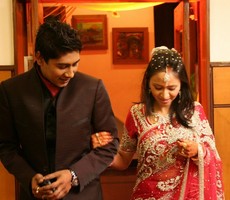
Depending on region and religion, wedding customs and ceremonies in India vary greatly. However what they all have in common is that they are lavish affairs and symbolize more the social coming together of two families than the union of two individuals. Prior to the wedding day, Byaha Haath, a ceremony of purification, is celebrated. Bride and groom are attended by seven unmarried females who apply a paste made from sandalwood, turmeric and rose water to the couple’s face, hands and feet. The couple are not allowed to leave home after that until their actual wedding day.
The exchange of vows is of course the crucial part. The bride sits on the right side of the groom until the vows are made. The right side is the place for strangers and acquaintances. After the vows, she moves to the left side of her husband, who has made a rather long list of promises to care for and look after his wife.
Special clothes are worn to the wedding and in Rajput, the groom, who is veiled, arrives on horseback. Given that weddings are a highly social affair, it often happens that hundreds or even thousands of guests appear, many of whom can even be unknown to the couple itself.
4. Mexico

Most Mexicans are Roman Catholics and the wedding ceremony take place within the church. Godparents, madrinas and padrinos, play an important role in the tradition. The madrina de lazo carries a rope, which maybe a rosary or a wreath made from orange blossoms as a symbol of fertility, and is wound in a figure-eight around the couple’s heads. The madrina de arras holds 13 coins which have been blessed by the priest and which symbolize the joint finances of the couple. The madrina de velacion is a woman of confidence to whom the bride can always turn for help and advice. Other godparents carry wineglasses for the wedding toast.
At the reception which follows the religious ceremony in church, the guests form a heart shaped ring around the newly weds before their first dance. And of course, what never can be amiss from a Mexican wedding is Mariachi music.
5. Las Vegas

A Las Vegas wedding must be the quickest and least ceremonial way to tie the knot. All you need is a license, but then you are spoiled for choice with the offer of hundreds of wedding chapels and companies which can arrange gazebo weddings, theme weddings, even underwater weddings, or, for those who are really in a hurry, drive-through weddings. Depending on your fancy and your budget, you can spend as little as $200 on your big day or you can spend thousands on a unique and truly flashy way to get married.
6. Germany

A traditional wedding day, in Germany, could actually last three days. First, German couples who are getting married must have a civil ceremony at the city center, which only family and close friends attend. The next night is the big wedding party. The bride and groom invite all of their friends, neighbors and acquaintances.German wedding tradition says it’s good luck for guests to bring old dishes to break. The newlyweds then sweep up the broken pieces together, symbolizing that nothing will ever be broken in their house again.
7. Morocco
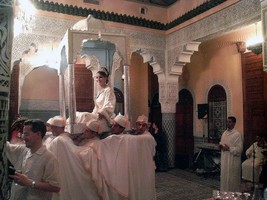
Morocco, one of the charms of the North Africa, is the country with very rich and lively traditions. Like other traditions of the world, a Moroccan wedding is a great revelry event. It is celebrated with great fun and festivity.
Each region has unique traditions for weddings. If you travel to Morocco, you will get the opportunities to participate in Morocco wedding celebrations or you even plan your own or your loved ones wedding celebrations in here. Modern Moroccan weddings usually take place at night at big villas that are solely rented out for weddings.
8. Korea

The traditional Korean wedding ceremony is steeped in Confucian values. Every gesture and move is strictly regulated and follows a protocol. The ceremony starts with a photo session, often in a beautiful garden, then the bride’s parents move to where the ceremony is to take place and wait at the wedding table for the groom’s party to arrive. The party is lead by what could be called the groom’s best man, who approaches the parents and makes them a gift of a mandarin duck. The groom then moves to the eastern part of the table.; the bride arrives and moves to the western side.
The couple wash their hands, bow to each other and then exchange a drink of wine. After which they bow again and…the ceremony is over. Throughout the short ceremony, both bride and groom are supposed to show no emotions and to move with dignity in the stiff and elaborate costumes they wear.
9. Saudi Arabia

Marriage in Saudi Arabia is an important family event initiated by the elders of the respective families. Once a man has made his choice, he proceeds to send gifts to the woman; she is free to reject if she does not want to go ahead with the marriage. Once price and dowry have been agreed upon, the bride is prepared much in the same way as in Morocco for her big day. A small religious ceremony takes place before a sheikh and the bride receives lavish gifts of jewelry.
The centerpiece of the wedding ceremony is the dinner. Men and women eat and drink in separate locations and only at the end will bride and groom sit together and share with their guests. The bride will wear traditional clothing along with a white Western-style wedding gown.
10. Turkey
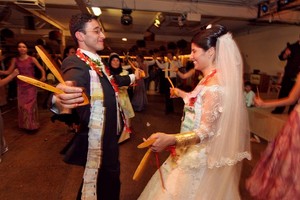
More than in other Muslim countries, a Turkish wedding combines elements of Western-style ceremonies with local religious traditions. Weddings are mostly held in luxury hotels and the bride will wear a white gown, adorned with a red sash, the color for good luck in Turkey. She and her husband-to-be will sit at a special table together with the witnesses, and an official will conduct the civil ceremony.
After that, the bride will often change into beautiful red or purple kaftans. She will be surrounded by females who henna her hands and then she will walk from table to table to receive gifts of gold and money from her guests.
The dinner which, contrary to Morocco and Saudi Arabia, is not taken by men and women separately, is preceded by the dance of the fathers, an important part of the wedding ceremony. Again, money and gold coins are thrown on the dance floor and collected by the kids to be handed to the couple to help pay for the expense of the wedding. At the end, a many-tiered wedding cake is rolled in, cut and served and each guest is given a little box with a piece of cake to take home.
